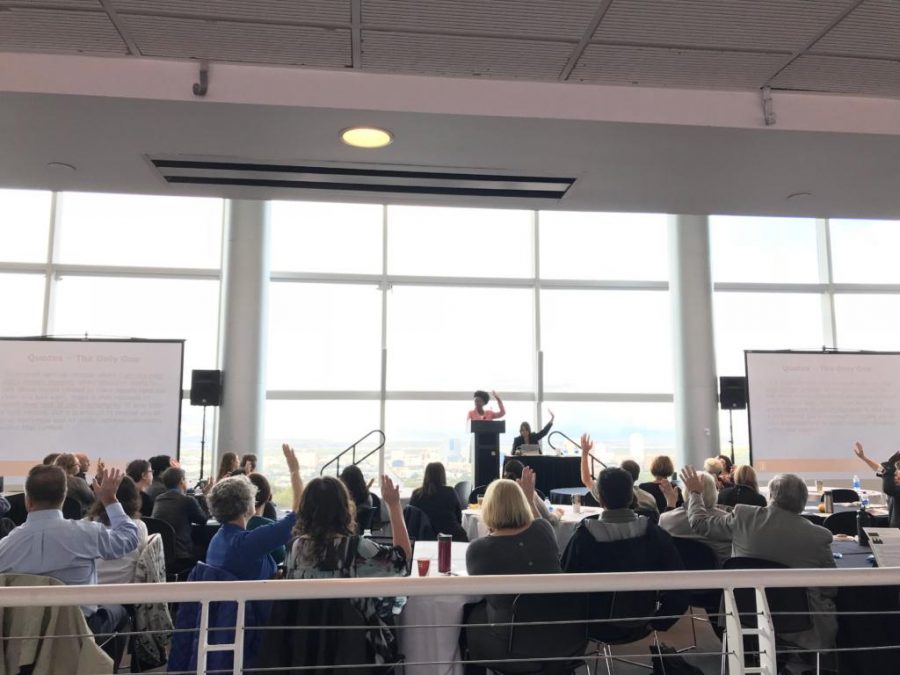Many members of the University of Utah’s faculty and staff gathered on Oct. 2 for an Inclusivity Forum presented by sociology professor Ruby Mendenhall and urban and regional planning professor Stacy Harwood of the University of Illinois at Urbana-Champaign (UIUC).
The forum focused on educating professors on how to deal with negative racial situations as well as offer tips on how to produce a prejudice-free class environment. Both Mendenhall and Harwood have conducted extensive research on racial micro-aggressions and other forms of discrimination toward students of color on college campuses.
Their research began with an online survey that asked students of color attending UIUC during the 2011-2012 academic year to take part. The survey yielded over 4,800 participants. Over half of the students who responded reported numerous experiences of being stereotyped in the classroom.
Mendenhall and Harwood presented these findings during the forum and read personal, anonymous stories from students of color on college campuses about their experiences with racial micro-aggressions while attending school. Volunteers from staff and faculty also put on skits, but the majority of the of the session was an open discussion between the professors, Mendenhall and Harwood.
After explaining their research, the women moved on to the training portion of the event. Mendenhall and Harwood explained to teachers how to create safe learning environments for all of their students. They began by sorting 1,200 examples of micro-aggressions into categories — informal classroom interaction, formal class discussion, behavior of the instructor and intervention.
From there, they moved on to what can be done on a personal level for every individual student.
“You need to prepare yourself for an ongoing, sometimes uncomfortable process of undoing your socialization,” said Harwood.
She reminded the attendees that they were not alone, and that faculty and staff should be working together to provide a safe and comfortable campus for every student — no matter race, gender, sexuality or background.
At a classroom level, the women encouraged professors to create environments and conversations that were safe and beneficial to all students.
“Think about your curriculum,” said Harwood. “Does the content of your core classes reflect your values about diversity and inclusion? Are you teaching classes that give students the skills to have difficult dialogue? It’s not just enough to recite the content.”
The meeting wrapped up with the group discussing what the administration can do to create a campus full of safe spaces for students of color and members of other minority groups.
“Our general society suffers when we don’t have that diverse voice,” Mendenhall said. “It can critique the status quo, the mainstream, that can move us forward towards these great and wonderful ideals that we have as a democracy.”
m.alder@dailyutahchronicle.com


